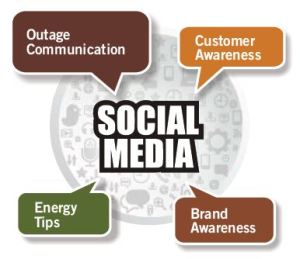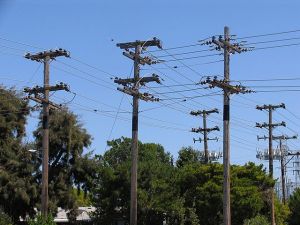Social media is the number one activity on the internet and has become a daily habit for many people’s lives around the world. With social media becoming a habit for many consumers businesses are looking to use it as a way to engage their customers, build brand visibility and popularity, generate leads and new business, offer customer service, and sell products and services. This shift in engaging the customer through social media is taking place in the utility industry as well. In the utility industry blogs and forums account for the majority of social media interaction with 43 percent, followed by twitter at 39 percent, and the reaming 18 percent is done through newsfeeds and other channels (Chawla, 2014).
With blogs and forums being the number one way that utilities are communicating with their customers it is important for them to do so in a manner that maximizes their engagement and dialogue with them. In Li and Bernoff’s (2011) book Groundswell the following best practices are given for successful blogging:
- Start by listening: It is important to listen to what is being said in your industry from competitors, pundits, and other influencers prior to diving into the conversation.
- Determine a goal for the blog: by setting a goal you know in what direction you need to go with the blog.
- Estimate the ROI: by determining the cost and payoff of the blog it will be easier to gain buy-in from other areas of the business.
- Develop a plan: you need to determine if your blog is going to have a single company blog or allow multiple contributors throughout your organization.
- Rehearse: write five to ten practice posts prior to posting you first blog, this will allow you to find your voice and decide on what topics you will focus on.
- Develop an editorial process: decide in advance who needs to review a blog prior to publishing it, but ensure that the process is fast enough to allow for quick posting if needed.
- Design the blog and its connection to your site: decide on the placement of the blog on your company’s website, “your design and the way you link the blog to your site will communicate just how official this point of view is” (Li & Bernhoff, 2011, p. 116).
- Develop a marketing plan so people can find the blog: Press releases, purchasing of words on search engines, leveraging traffic of blog sites identified in step 1, and using the name of your company or products in the title or text of the blog will allow it to be found easier through search engines.
- Remember, blogging is more than writing: you need to monitor and respond to blogs other than your own; in addition responding to comments on your blog is an important aspect of a successful blog.
- Finally, be honest: even when things go wrong, companies that respond honestly increases their credibility and ultimate chance for success.
For the utility industry it is important that their social media activity; whether it is through blogging, twitter, or newsfeeds that it finds ways to engage the customer, build awareness, educate the customer, and offer customer service. This can be done by looking at what is currently being done by others in the industry:
- Build connections with your consumer: The majority of utilities start their use of social media by notifying customers of outages. This was evident in 2012, during hurricane Sandy when a number of utility providers collectively used twitter to update customers and “20 million Tweets were posted during and after the calamity” (Chawla, 2014, p. 3).
- Create customer awareness: Some utilities are using YouTube videos and Facebook posts to educate customers on topics like energy efficiency, smart meters, and industry trends. Others are using social media to “generate user-specific awareness regarding changes in pricing, billing, or even allowing customers to design their bills” (Chawla, 2014, p. 3).
- Create Brand Awareness: utilities are actively using social media to shape the way their customers think of them. In addition some utilities are calculating their brand’s Net Promoter Score (NPS), this provides them with a good view of customer loyalty (Chawla, 2014).
- Offer energy advice and tips: Utilities are using social media as a cost effective way to educate customers on energy savings and good use of electric equipment in a manner that is much more cost effective than traditional audio-visual campaigns (Chawla, 2014).
What types of information would you like to receive from your utilities through social media?
References:
Chawla, R. (2014). The socail media manual for the utility industry-guidlines & best practices. Retrieved June 1, 2014, from WNS: http://www.wns.com/Resources/Articles/Article-Details/109/The-Social-Media-Manual-for-the-Utility-Industry—Guidelines-/-Best-Practices.aspx
Li, C., & Bernhoff, J. (2011). Groundswell winning in a world transformed by social technologies. Boston, MA: Harvard Business School Publishing.







